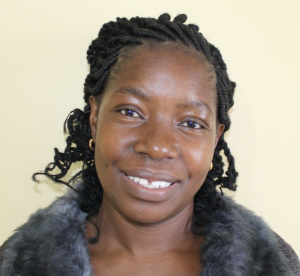June, 2019: Musasa Secondary School Rain Tank Complete!
A new rainwater catchment system was built! Musasa Secondary School in Kenya now has a new source of safe, clean water thanks to your support. Handwashing stations were delivered so that students can clean up after using their new latrines, and students and staff received training in sanitation and hygiene.

Thank you!
Rainwater Catchment Tank
Construction for this 50,000-liter rainwater catchment tank was successful!
Parents, staff, and students helped our artisans gather everything needed for construction. All the while, women cooked meals for the artisans, and the school provided accommodations for the artisans during their work. Local men and women helped our artisans with their manual labor, too.

Sinking the pits for the latrines
The process officially began with our staff and school administration looking around the school compound to try and determine the best location for a new rainwater catchment tank. This needed to be the best site with good, clean roofing to catch the rainwater.

Gathering stones for the foundation of the rain tank

Bringing water to mix cement
Then, we cleared the site: excavating the soil within the required measurements to make level ground for the tank foundation. The foundation was cast by laying hardcore on level ground and then reinforcing it using steel, concrete and waterproof cement.

Building up the tank walls
Both the drawing pipe as well as the washout pipe were affixed as the foundation was lain. The wall was built with ferro-cement techniques through six layers. The inner wall was plastered while rough casting was done on the outer part. Finally, the catchment area was dug, plastered, and a staircase installed.

Inside the rain tank
Dome construction could begin after the superstructure had been given enough time to settle. The manhole cover was fitted, inlet pipes were connected to the roof gutters, inlet screens, ventilation pipes (breathers) and overflow pipes were all done to standard.

Building the tank's dome
Once finished, the tank was given three to four weeks to undergo complete curing before it was cleaned and handed over to Musasa Secondary School, though we will continue to offer them unmatchable support as a part of our monitoring and maintenance program.
The official opening and handing over of the project was a great chance for us to acknowledge the school administration and students as the primary parties entrusted with the tools we’ve given, as well as remind them of our continued support as they develop.

Finishing weaving the rebar into the dome

Finished tank basking in the sun
"Installation of this tank has now solved the problem of time wastage that was used to walk for long distances to go to fetch water from the spring," said 17-year-old student Miss Phanice Oronga.

Smiles for flowing water
"We will now be able to concentrate more on our classwork and I believe our performance as a school will also improve. We will also have enough water to clean our latrines daily and wash our hands after using the toilet which we could not do before," she said.

Cheers to a fresh cup of water!

Thank you!
VIP Latrines
This project funded the installation of six new ventilated improved pit (VIP) latrines. All of these new latrines have cement floors that are easy to use and clean. And with a rainwater catchment tank, there should be enough water to keep them clean all the time.

Students outside their new latrines
Handwashing Stations
The two handwashing stations were delivered to the school and handed over to the Child to Child (CTC) health club. These were placed outside of the boys’ and girls’ latrines to encourage handwashing after latrine use.

Happy handwashing
CTC club members teach other students how to properly wash their hands at the stations, and make sure there is always soap or ash available. Now the school has the stations they need, and they have the water to fill them.
New Knowledge
Hygiene and sanitation training was scheduled with the help of school staff, who ensured that the training date would be convenient for students, staff, and parent representatives. Individual teachers helped by selecting students from each class to represent the others.

Student at Musasa Secondary School
The training took place at Musasa Secondary School during the school break for the end of term holidays. With the help of the school principal and bursar, a selection of 20 students and 1 teacher came to training, who were then expected to share their knowledge with the rest of the students and staff who did not attend. Sessions were held predominantly inside to take cover from the sun and make use of the quiet space.

Training session
A number of topics were covered, including personal hygiene such as bathing, oral hygiene, and handwashing with soap as a barrier from germs; operation and maintenance of the new facilities, with each person understanding their role for long-lasting clean water and good health. The CTC health club will be greatly involved in project management and will be responsible for encouraging good health and hygiene practices amongst their peers, teachers, and the larger community.

Demonstration activity
The CTC club leaders were elected after a training session on Leadership and Governance, where the students discussed the qualities they thought made a good leader. They identified the qualities of being responsible, honest, kind, respectful, courageous, humble, and actively including others. This made it easy for them to then identify their peers whom they thought best exemplified these traits and who would lead the CTC with integrity.
The participants were excited to learn about solar disinfection of their water and they said they would teach their family members and friends on how to practice this method which was simple and less expensive than other methods. This will ensure that they always drink treated water to keep away infections and waterborne diseases.

Practicing handwashing
"We have learned so many things that we didn't know about sanitation and hygiene. Now we will lead a healthy life and absenteeism in school due to infections and waterborne and water-related diseases will reduce," said Mr. Joakim Simani, a 19-year-old student at the school.

Friends
The participants listened keenly to what they were taught during training, and they also noted down points for future reference. They asked questions after the end of every topic, and they were eager to participate in demonstrations. This was considered a very successful training with a very receptive audience and active participants.
Musasa Secondary School now feels ready to make good use of the installed projects and take good care of them into the future.
"Since the baseline survey was conducted we have been praying to God to answer our prayers so that the WaSH project can be implemented in our school," said Mrs. Pamela Masolia, the Musasa Secondary Principal.
"I can't believe [this project] has come to pass. Thank you for the good work you are doing to vulnerable schools like ours. God bless you."
Thank you for making all of this possible!


 Rainwater Catchment
Rainwater Catchment
 Rehabilitation Project
Rehabilitation Project









































